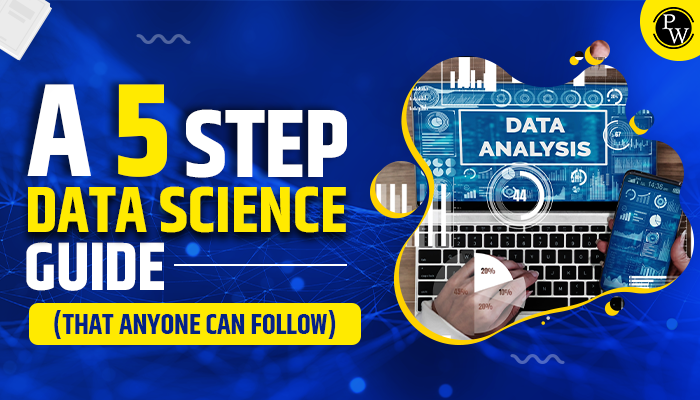“Data” refers to various types of information that are typically organized in a specific way. In software, everything can be divided into two main categories: programs and data. We’ve just talked about data, and programs are instructions that help us work with that data.
To simplify the process of handling data, we turn to a field called data science. Data science combines mathematical knowledge, programming skills, expertise in specific subjects, scientific methods, algorithms, processes, and systems.
Its main goal is to extract useful knowledge and insights from different types of data, whether they are well-organized or not. Then, we can apply this newfound knowledge to various areas and industries for various purposes.
How is DATA Generated?
Data is generated through various processes and activities in our everyday lives. It can come from numerous sources and in different forms. Here are some common ways in which data is generated:
Human Interaction:
Much of our data comes from interactions with the digital world. We generate data every time we use our smartphones, tablets, or computers to send a text, make a call, browse the internet, or post on social media. This includes text messages, call logs, website browsing history, and social media posts.
Sensors and IoT Devices:
In our increasingly connected world, sensors and Internet of Things (IoT) devices play a significant role in data generation. These devices, such as smart thermostats, fitness trackers, and security cameras, constantly collect and transmit data about their surroundings, user activity, and environmental conditions.
Business Operations:
Companies generate vast amounts of data in their day-to-day operations. This includes sales transactions, customer interactions, inventory records, and financial transactions. Businesses often store and analyze this data to make informed decisions.
Scientific Research:
Researchers generate data through experiments, surveys, observations, and simulations. Scientific data can range from lab measurements to satellite imagery and is crucial for advancing our understanding of various fields, from medicine to climate science.
Government and Public Records:
Government agencies collect and maintain extensive datasets, including census data, weather records, crime statistics, and public health information. These records are used for governance, policy-making, and public services.
Online Activities:
E-commerce platforms, online services, and search engines collect user behavior, preferences, and interaction data. This data is often used for targeted advertising and improving user experiences.
Entertainment and Media:
Streaming services like Netflix and music platforms like Spotify collect data on user preferences and viewing/listening habits to recommend content. This data helps personalize content recommendations.
Healthcare and Medical Devices:
Electronic health records, medical imaging, and wearable health devices generate a wealth of health-related data. This information is vital for patient care, medical research, and healthcare management.
Environmental Monitoring:
Remote sensors and satellites gather data on weather patterns, natural disasters, and environmental changes. This data aids in weather forecasting, disaster management, and climate research.
Financial Transactions:
Every financial transaction generates data, whether it’s an ATM withdrawal, credit card purchase, or online payment. Financial institutions use this data for record-keeping, fraud detection, and financial analysis.
Data is generated from various sources and activities in our modern world. This diverse and ever-expanding data pool drives the field of data science as experts seek to extract valuable insights and knowledge from this wealth of information.
Types of Data
Data can be categorized into two main types:
Qualitative Data:
This type of data describes the characteristics or qualities of something or someone. It’s all about providing descriptive information. For instance, we deal with qualitative data when discussing a person’s skin color, eye color, or hair texture. It helps us understand the qualities or attributes of the subject.
Quantitative Data:
On the other hand, quantitative data gives us numerical information. This means it provides us with specific numbers or measurements. For example, we deal with quantitative data when we measure a person’s height and weight. It allows us to express information numerically, making it easy to perform mathematical operations and statistical analysis.
Analyzing Qualitative Data
When analyzing qualitative data, there are two main approaches: deductive and inductive.
Deductive Approach:
In this method, the analyst begins with a specific question or hypothesis in mind. They then evaluate the data with that question in mind, looking for subjective insights.
Inductive Approach:
In contrast, the inductive approach involves examining the data without any preconceived agenda. Analysts look for patterns and themes within the data itself. This approach is often referred to as grounded theory.
It’s worth noting that the inductive technique can be more time-consuming compared to the deductive approach. This is because it involves a more open-ended data exploration to uncover unexpected insights and patterns.
Recommended Course
- Decode DSA with C++
- Full Stack Data Science Pro Course
- Java For Cloud Course
- Full Stack Web Development Course
- Data Analytics Course
Tools for Analyzing Qualitative Data
When it comes to qualitative data analysis, there are various tools, both analog and digital, that help in organizing, structuring, and examining non-numeric information.
SWOT Analysis:
This framework stands for Strengths, Weaknesses, Opportunities, and Threats analysis. It’s used to pinpoint and evaluate internal and external factors that can influence the outcomes of a particular situation, individual, project, or product. SWOT analysis provides a snapshot view, helping us understand the qualitative dynamics that can impact success.
Porter’s Five Forces:
This framework enhanced the SWOT analysis developed by Harvard professor Michael E. Porter. It assists in identifying and assessing the internal and external factors that can affect success. Porter’s Five Forces is particularly useful for a more comprehensive understanding of the competitive landscape.
Qualitative Data Analysis Software (QDAS) tools are available to streamline the collection and analysis of qualitative data, saving time and effort. These tools offer features like sentiment analysis and text interpretation, transcription analysis, and recursive abstraction. They make the process of working with qualitative data more efficient and insightful.
Types of Quantitative Data
Quantitative data comes in various forms, and here are some common examples:
Measurement of Physical Objects:
We use measurements to quantify physical things. For instance, in an organization, the HR department carefully measures and assigns each cubicle to newly hired employees.
Counting:
Counting involves tallying up how many of something there are. For example, you can count how many people have downloaded a particular application from the App Store to gauge its popularity.
Sensory Measurement:
This method uses sensors to measure parameters and naturally convert them into numerical data. For instance, a digital camera can convert electromagnetic information into numeric data for processing.
Quantifying Qualitative Information:
This approach assigns numbers to qualitative information. For instance, in an online survey, respondents might rate their likelihood of recommending something on a scale from 0 to 10. This numerical rating turns qualitative feedback into quantitative data.
Data Projection:
Data projection involves using mathematical analysis tools and algorithms to predict future trends. For example, after launching a new product and conducting a thorough analysis, a marketer may use these tools to predict future production growth.
These different types of quantitative data help us make sense of the world by turning real-world information into numbers that we can analyze and use for various purposes.
Methods for Analyzing Quantitative Data
While collecting data is a crucial part of research, it’s equally important to analyze it to gain meaningful insights. Here are some methods commonly used to analyze quantitative data gathered through surveys:
Cross-tabulation:
This is the go-to method for analyzing quantitative data. It uses a simple table format to compare different data sets in your research. It’s beneficial when you want to see how two or more data sets are related or connected.
Trend Analysis:
Trend analysis is handy if you’ve collected quantitative data over an extended period. It helps you examine how your data has changed over time. This can provide valuable insights into patterns and developments.
MaxDiff Analysis:
This method gauges customer preferences when making purchase decisions. It helps determine the ranking of different parameters, such as product features, in terms of importance. MaxDiff is also known as the “best-worst” method, and while it can be time-consuming, it’s quite flexible and relatively easy to implement.
Conjoint Analysis:
Like MaxDiff analysis, conjoint analysis assists in evaluating various parameters to make informed decisions. This method further gathers and analyzes advanced metrics, offering a deeper understanding of the most critical parameters. It’s handy for gaining insights into purchasing decisions.
These methods allow researchers to dig into quantitative data, uncover patterns, and draw meaningful conclusions to inform decision-making and research outcomes.
Recommended Reads
Data Science Interview Questions and Answers
Data Science Internship Programs
IIT Madras Data Science Course
What is Data? FAQs
Q1. Define data.
Ans. Data refers to information transformed into a form efficient for movement or processing in computing. Data is converted in a 2D digital form compared to current computers and transmission media. The use of the data as one or two separate subjects is acceptable.
What is data in DBMS?
Ans. Data refers to individual items or sets of items stored in a database. Data is typically stored in database tables, organized into columns that specify the data types.
What is the significance of data?
Ans. Data plays a crucial role in enabling organizations to evaluate the effectiveness of their strategies. Organizations can measure how well their solutions overcome challenges by collecting data.
What are the five main data types in computer programming?
Ans. The five primary data types to remember are:
String (or str or text) - used to combine any characters on a keyboard, such as letters, numbers, and symbols.
Character (or char) - used for single letters.
Integer (or int) - used for whole numbers.
Float (or Real) - used for decimal numbers.
Boolean (or bool) - used for true/false values.






